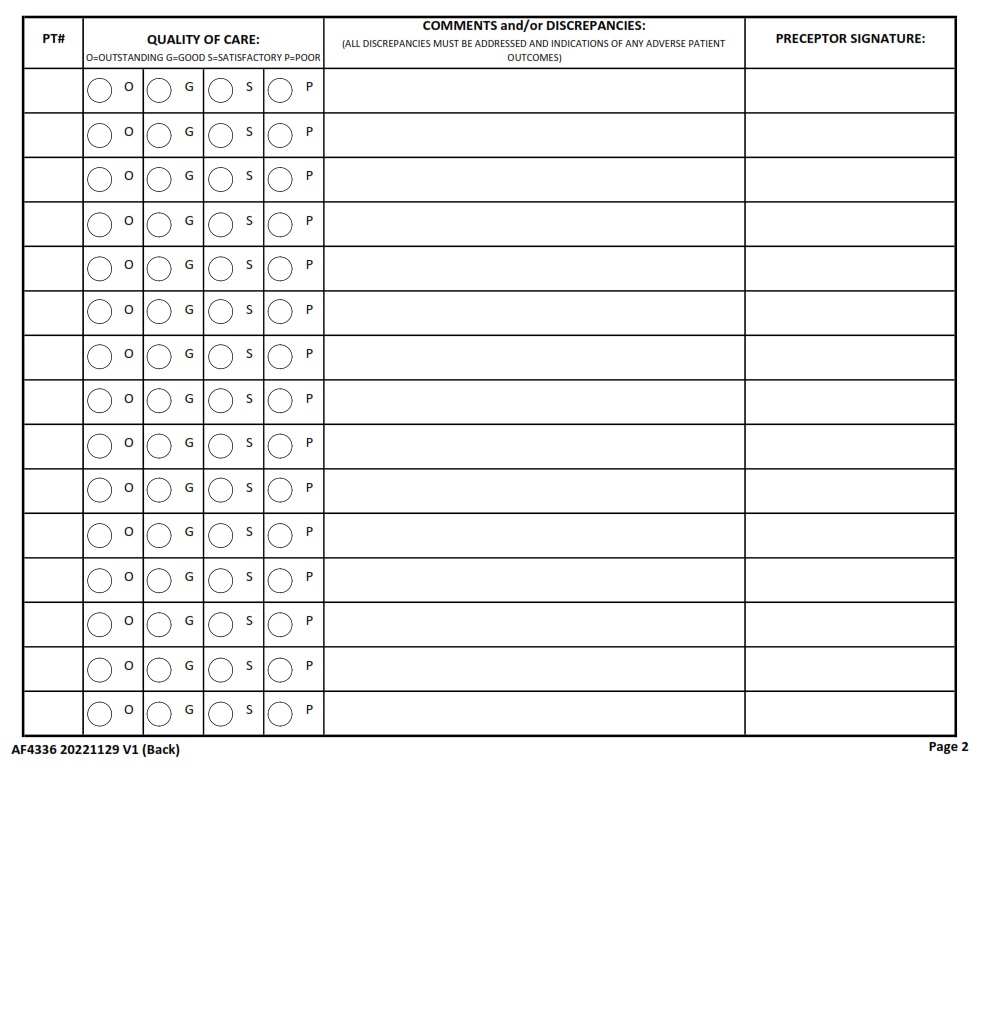AF-FORMS.COM – AF Form 4336 – IDMT Patient Encounter Form – The AF Form 4336, also known as the IDMT Patient Encounter Form, is an important document for medical professionals in the United States Air Force. This form provides a standardized format to document patient health encounters and serves as a point of reference for healthcare providers throughout the military. It provides a detailed account of health services provided, including diagnosis and treatment information.
Download AF Form 4336 – IDMT Patient Encounter Form
| Form Number | AF Form 4336 |
| Form Title | IDMT Patient Encounter Form |
| Edition Date | 11/29/2022 |
| File Size | 2 MB KB |
AF-Form-4336-IDMT-Patient-Encounter-Form.pdf (66 downloads )
What is an AF Form 4336?
AF Form 4336, otherwise known as the IDMT Patient Encounter Form, is used for recording patient encounters in the Integrated Disability Management Tool (IDMT). This form must be completed any time a patient is seen by a medical provider. It contains basic information about the patient and their visits, such as appointment type, service provided, diagnosis codes, and treatment plans. The form also includes sections for documenting assessments and outcomes of an evaluation or treatment. This information helps to ensure that all relevant data points are captured during the encounter so that a comprehensive record can be maintained. Additionally, it serves as proof of services rendered and allows providers to assess clinical progress over time. By tracking this data electronically via AF Form 4336, medical providers can better monitor patients’ conditions and ensure that they receive appropriate care in a timely manner.
Where Can I Find an AF Form 4336?
AF Form 4336, also known as the IDMT Patient Encounter Form, is a form used by healthcare professionals to document and track patient encounters in an integrated primary care setting. The form is available from the Air Force Medical Service (AFMS) website and can be accessed by clicking on “Forms” under the “For Health Care Professionals” heading. Additionally, AF Form 4336 can be found at military treatment facilities across the U.S., where they are typically located in clinical examination rooms. It is important that forms are completed accurately and promptly to ensure proper tracking of patient visits and follow-up care. AF Form 4336 includes sections for documenting patient demographics, details about the visit itself such as the reason for visit, assessment results, diagnosis/treatments provided or referred out for specialist opinion, etc., instructions given to patients regarding follow-up instructions or medications prescribed among other information related to the visit. Filling out this form correctly enables healthcare providers to provide better continuity of care over time while enabling more effective monitoring of preventative measures taken with each patient encounter.
AF Form 4336 – IDMT Patient Encounter Form
AF Form 4336, the IDMT Patient Encounter Form, is used to document medical encounters with patients. It serves as a record of the patient’s visit and allows authorized personnel to track pertinent information on the patient’s health history. The form consists of five sections: Medical Information, Diagnosis/Treatment, Follow-Up Instructions, Clinical Notes, and Additional Notes.
In the Medical Information section, healthcare providers can enter basic information about their patients such as vital signs and allergies. The Diagnosis/Treatment section contains fields for documenting the diagnosis of an illness or injury as well as any treatments that were provided during the visit. This section also includes a field for entering any medications prescribed by the provider during the encounter.
The Follow-up Instructions section provides space to list out specific instructions given by the doctor regarding follow-up care or tests that must be completed after leaving the office. It is important to document these instructions so that they may be referred back to if needed in future visits or contact with a different healthcare provider. Additionally, this section offers space for recording referrals made to specialists should further treatment be required outside of what was offered at that particular medical encounter.
Finally, AF Form 4336 also has two sections dedicated solely to notes entered by healthcare providers during their encounter with a patient; Clinical Notes and Additional Notes serve this purpose respectively.

